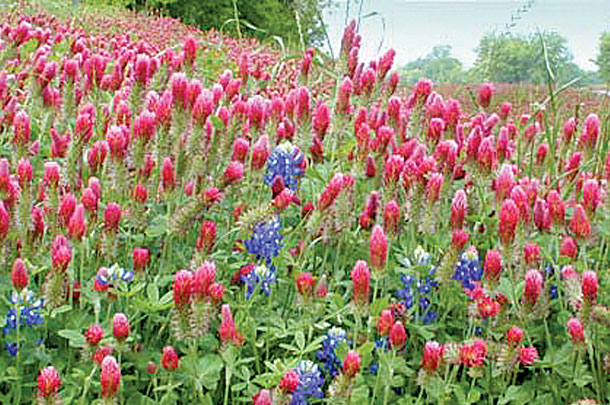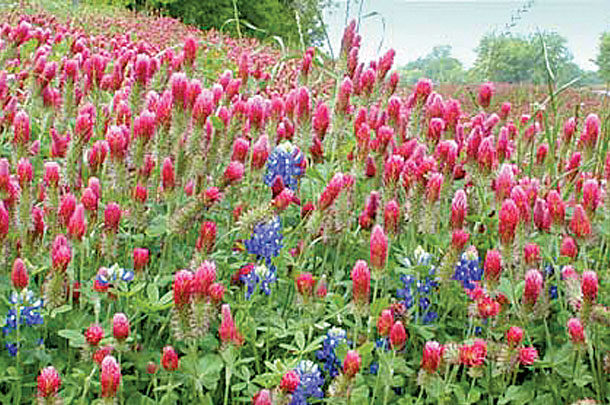Understand the history, environmental adaptation and production capability of the forage cultivar before purchasing seed, because planting costs are an investment that needs to pay dividends. Forages are often planted in a prepared seedbed, which involves plowing, disking and rolling at an average cost of $39.10 per acre if each of the three operations is done separately. When a disk plow, disk and rolling basket are pulled in tandem, the average cost is $25.70 per acre. Planting seed in an established pasture with a no-till drill costs about $25.80 per acre.
The above July 2019 published costs were obtained from the University of Illinois – Urbana-Champaign. The per-acre field operation costs include tractor and implement overhead, fuel and lube costs, and labor expense. With $25 to $40 per acre land preparation costs plus another $8.90 per acre for broadcast seeding, it is important to prepare a firm seedbed and then select the right cultivar.
Cultivar development
Cultivar selection is easier when development methods are understood. The term “cultivar” is defined as a plant variety that has been produced in cultivation by selective breeding. New cultivars are developed to fix a problem, such as plant pests, environmental adaption or production system deficiency.
Dr. Gerald Smith, a legume breeder with Texas A&M AgriLife Research at Overton, Texas, gave two examples of cultivar development to fit a need. “There were gaps in green forage availability in the Southeastern region of the United States because warm-season grasses are dormant for five months during fall and winter. This production system problem led to development of many new cool-season forage cultivars of small grains, ryegrass and clovers. Due to severe disease problems with Arrowleaf clover, virus-resistant cultivars (Apache and Blackhawk) were developed by Texas A&M AgriLife Research.”

Aggie Clover Banner 1 exhibits improved production under Texas soil and climate conditions. It was developed by Dr. Gerald Smith. Photo provided by Robert Fears.
“Foundation seed of a new cultivar can take from eight to 10 years to develop,” said Greg Aston with Allied Seed LLC and based in Tennessee. “Then additional time is required to complete the cultivar release process and increase seed supply from a few pounds to enough for commercial sales.”
“Multilocation and multiyear testing is required to release new cultivars from the Texas A&M University System. Minimum requirements, in most cases, are a minimum of two years of testing at three locations involving six environments,” said Smith. “Testing is more complex for multiharvest forage crops than single-harvest grain crops. Ryegrass and clover trials at Overton are harvested three to five times from February to June to simulate grazing periods. In addition to yields, data is collected that describes all morphological traits and any unique characteristics such as pest resistance.”
After all research data is collected, a release proposal document is prepared by the breeder to begin the cultivar release process. The document contains breeding history, cultivar description and data comparisons between the new cultivar and standard commercial cultivars. Texas A&M plant breeders submit the completed release proposal to the Texas A&M AgriLife Research Plant Release Committee for review. After review, edits and approval, the document is reformatted and submitted for publication in the Journal of Plant Registrations. The same data is used in preparing a plant variety protection (PVP) application for submittal to the United States Plant Variety Protection Office. When approved, the PVP provides 19 years of patent protection for the new cultivar.
The next and last development step is to use 1 or 2 pounds of breeder seed to produce commercial quantities needed for full-scale production. This takes at least two years and is often accomplished through a partnership between the breeding organization and a commercial seed company. The first crop produced from breeder seed is foundation seed, which is planted to produce registered seed. Certified seed, produced from registered seed, is normally the first generation made available for public purchase.
“Foundation/certified seed production process is completed under the authority of each state’s department of agriculture. Most new cultivars are licensed to commercial seed companies for marketing,” said Smith.
Cultivar selection
“It is important to select a forage species and cultivar adapted to your area,” said Michael Warner, co-owner of Warner Brothers Seed Company, Lawton, Oklahoma. “Know the pH of your soil and your soil type to ensure that the selected forage will adequately grow under those conditions. Whether growing forage for sale or feed, select a forage species and variety that meets the needs. What time of year is the forage needed? Do you need a cool-season or warm-season crop? What are the nutrient requirements of the livestock? Forage species vary in nutrient content such as energy and protein.”
“Learn how the selected forage is performing in your area by talking with reputable seed dealers, growers and county agricultural extension agents. Regardless of the selection, buy good-quality seed,” recommended Aston.
“Use all available resources in planning your purchase,” said Smith. “Review information from books, websites, conference materials and extension fact sheets. Look for local or regional information from the state land-grant university or seed breeding organization. Locate and visit multiyear trials that provide information relevant to your operation. Read the seed tag and pay special attention to variety and type of seed, total germination, noxious weed content, germination test date and seed origin. Never buy seed later than eight months following the germination test.”
Planting forages is an investment. Carefully choose cultivars that will provide the best returns.











